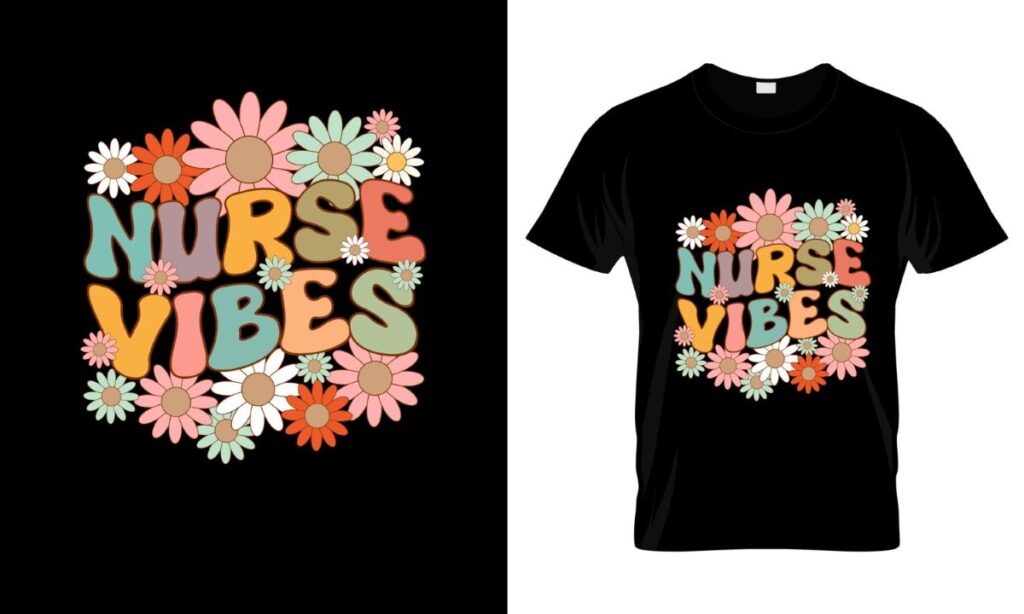DTF supplies are essential for anyone looking to dive into the world of Direct-to-Film (DTF) printing. Whether you’re a beginner eager to experiment with vibrant fabric designs or a seasoned pro updating your toolkit, having the right equipment is crucial to your success. Understanding the nuances of DTF printing for beginners will help you navigate the tools and techniques more effectively, leading to stunning results. In this guide, we’ll explore the essential DTF tools and supplies you need, as well as valuable tips on how to use DTF film and master intricate DTF printing techniques. Let’s unlock the rewarding potential of DTF printing supplies and elevate your crafting experience!
When you think about creating printed designs on fabric, direct transfer supplies come to the forefront as key components. As a craft enthusiast or a budding entrepreneur, knowing the right tools and materials can significantly impact the outcome of your projects. This detailed overview of direct-to-film printing essentials provides you with everything you need to know to get started. We’ll delve into the various instruments required for effective heat transfer, highlighting how to leverage various printing methods. By exploring the intricacies of transfer techniques and tools, you can pave the way for vibrant, quality fabric prints.
Introduction to DTF Printing and Its Benefits
Direct-to-Film (DTF) printing has rapidly gained popularity among crafters and businesses due to its remarkable versatility and high-quality output. This innovative technique allows for crisp detail and vibrant colors, making it ideal for a variety of fabric types. Whether you’re looking to print on cotton, polyester, or a blend, DTF printing can deliver impressive results, even on dark fabrics. Understanding the core benefits of DTF printing will help beginners fully appreciate this method and its potential.
One of the standout advantages of DTF printing is its ability to produce intricate designs without the need for weeding, as required by some heat transfer vinyl methods. This means that you can create detailed and colorful images that can be transferred seamlessly onto items such as garments, bags, and more. Moreover, the durability of DTF prints means that they withstand repeated washings, which is a crucial factor for both hobbyists and commercial operations.
Essential DTF Supplies Every Beginner Needs
To successfully embark on your DTF printing journey, having the right supplies is essential. The foundation of your setup should include a reliable DTF printer, which is specifically designed to handle the unique requirements of this printing method. Additionally, DTF heat transfer film is a must-have, as it serves as the medium for your prints. When selecting your supplies, pay close attention to the compatibility of printers and inks, as using mismatched products can lead to disappointing results.
DTF inks are crucial for achieving the vibrant colors that DTF printing is known for. These water-based inks work well with the film and allow for smooth transfers onto fabric. Coupling these with high-quality adhesive powder will ensure that your designs adhere properly during the transfer process. A heat press machine is another fundamental tool, as it provides the necessary heat and pressure to create lasting prints.
Finally, don’t overlook the importance of graphic design software. This allows you to edit images and tailor your designs specifically for DTF printing. These essential tools combined will set a solid foundation for your DTF printing endeavors.
How to Use DTF Film Effectively
Using DTF film effectively is key to obtaining the best results in your printing projects. Start by familiarizing yourself with the different types of films available on the market, as they vary in thickness and finish. It’s essential to choose a film that is compatible with your DTF printer and fits the specific needs of your designs. Ensure that your printer settings are adjusted to accommodate the film type, which may involve tweaking color profiles or paper type settings.
When printing on DTF film, it’s crucial to monitor the ink application. A consistent output will ensure a smooth transfer to fabric. Also, remember that timing is everything; the adhesive powder must be applied while the ink is still wet to ensure proper bonding. Following best practices when working with DTF film can drastically improve your print quality and overall satisfaction with the final product.
Mastering DTF Printing Techniques for Beginners
Beyond the basics of DTF supplies, mastering specific printing techniques can greatly enhance your overall results. Start by investing time into designing your artwork to ensure it is vibrant and aesthetically pleasing. Use high-resolution images and consider the final fabric type; this attention to detail is crucial for effective DTF printing. Familiarizing yourself with various design elements can also lead to more impactful prints.
Once your design is ready, pay attention to the printing process. Ensure your DTF film is loaded correctly and that your printer’s settings are optimized. Achieving an even ink distribution will allow for better adherence during the transfer phase. After printing, the application of adhesive powder is a critical step. Properly coating the design will secure adherence once heat is applied, ensuring a high-quality finish.
The Transfer Process: Turning Designs into Reality
The transfer process is where DTF printing comes to life, transforming your printed designs into real-world applications. Start by preheating your heat press to the desired temperature according to the type of fabric being used. Carefully align the cured film onto the fabric, ensuring that it sits in the intended position before placing a protective sheet on top.
Once aligned, lower the heat press and apply the necessary pressure. The timing for this step is crucial; pay attention to both the duration and temperature settings to guarantee that the adhesive properly bonds to the fabric. After the pressing, allow your design to cool completely before peeling off the film, which helps to maintain the integrity and vibrancy of the print.
Tips for Caring for DTF Printed Fabrics
To extend the life of your DTF printed garments or items, proper care is essential. Always follow the recommended washing guidelines, which typically advise against using harsh detergents or bleach that can fade or damage the prints. Instead, opt for a gentle cycle and cold water to preserve color vibrancy.
Additionally, consider air drying your DTF printed fabric items rather than using a dryer, as the heat can degrade the adhesive over time. When ironing, avoid direct contact with the printed area by using a protective barrier, keeping your prints looking fresh and new for longer. By implementing these care tips, you can ensure the longevity of your DTF creations.
Frequently Asked Questions
What are the essential DTF supplies for beginners?
Beginners in DTF printing should focus on acquiring a DTF printer, DTF heat transfer film, DTF inks, adhesive powder, a heat press machine, protective sheets, and graphic design software. These essential tools will ensure high-quality print results.
How do I use DTF film for printing designs?
To use DTF film, load it into your DTF printer, adjust the printer settings, and print your design directly onto the film. After printing, sprinkle adhesive powder over the wet ink, cure it using heat, and then transfer the design onto fabric using a heat press.
What techniques should I follow for effective DTF printing?
Effective DTF printing techniques include designing artwork with attention to colors and resolution, ensuring even ink application during printing, proper powder coating, curing the adhesive, accurately transferring the design, and allowing it to cool before peeling off the film.
Can I use regular inks for DTF printing supplies?
No, you cannot use regular inks for DTF printing. You need specialized DTF inks, which are water-based and formulated to produce vibrant colors on the DTF film while adhering correctly to the fabric during the transfer process.
What type of heat press is best for DTF printing?
For DTF printing, both clamshell and swing-away heat press machines can be effective. Choose one that fits your workspace and usage needs while ensuring it can reach the required temperatures for optimal DTF transfer results.
What software do I need for preparing DTF printing designs?
Graphic design software is crucial for preparing DTF printing designs. Popular options include Adobe Illustrator and CorelDRAW, but beginners can also explore budget-friendly alternatives. Familiarity with design software will enhance your DTF printing projects.
| Essential DTF Supplies | Description | Buying Tips/Recommendations | |
|---|---|---|---|
| DTF Printer | A specialized printer for DTF printing on coated film. | Choose user-friendly models with positive reviews (e.g., Epson, Mimaki). This ensures compatibility with DTF inks. | |
| DTF Heat Transfer Film | The medium for printing designs; comes in rolls or sheets. | Select the film type according to your project size; many opt for rolls. | |
| DTF Inks | Specific water-based inks needed for vibrant output. | Ensure inks are compatible with printer; check supplier recommendations. | |
| Adhesive Powder | Helps bond the ink to fabric during transfer. | Spread evenly on wet designs, removing excess before curing. | |
| Heat Press Machine | Applies heat and pressure for transferring designs. | Choose between clamshell or swing-away models based on space and usage. | |
| Protective Sheets | Sheets that protect fabric and heat press from residues. | Always place over transfer to avoid stickiness. | |
| Software | Design software for creating graphics before printing. | Options include Adobe Illustrator, CorelDRAW; look for budget-friendly tools. | |
Summary
DTF supplies are crucial for anyone looking to dive into the world of Direct-to-Film printing. Understanding each tool’s role—from the DTF printer that facilitates the process to the heat press that ensures a quality transfer—is essential for achieving outstanding results. Each component contributes to the overall success of your projects, making it important to invest in quality tools. By mastering the necessary techniques alongside these supplies, beginners can transform their creative visions into reality. Whether for personal projects or business ventures, the right DTF supplies empower you to create vibrant, long-lasting designs on a variety of fabrics. Embrace the DTF printing journey and let your creativity flourish!



